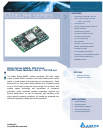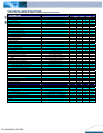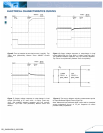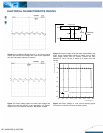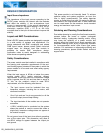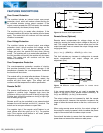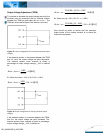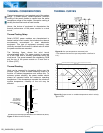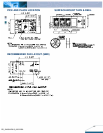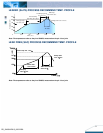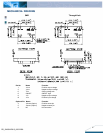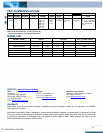
DS_S48SA1R812_06012006
This power module is not internally fused. To achieve
optimum safety and system protection, an input line
fuse is highly recommended. The safety agencies
require a normal-blow fuse with 3A maximum rating to
be installed in the ungrounded lead. A lower rated fuse
can be used based on the maximum inrush transient
energy and maximum input current.
Soldering and Cleaning Considerations
Post solder cleaning is usually the final board assembly
process before the board or system undergoes
electrical testing. Inadequate cleaning and/or drying
may lower the reliability of a power module and
severely affect the finished circuit board assembly test.
Adequate cleaning and/or drying is especially important
for un-encapsulated and/or open frame type power
modules. For assistance on appropriate soldering and
cleaning procedures, please contact Delta’s technical
support team.
DESIGN CONSIDERATION
Input Source Impedance
The impedance of the input source connecting to the
DC/DC power modules will interact with the modules
and affect the stability. A low ac-impedance input
source is recommended. If the source inductance is
more than a few µH, we advise adding a 10 to 100 µF
electrolytic capacitor (ESR < 0.7 Ω at 100 kHz)
mounted close to the input of the module to improve the
stability.
Layout and EMC Considerations
Delta’s DC/DC power modules are designed to operate
in a wide variety of systems and applications. For
design assistance with EMC compliance and related
PWB layout issues, please contact Delta’s technical
support team. An external input filter module is
available for easier EMC compliance design.
Application notes to assist designers in addressing
these issues are pending release.
Safety Considerations
The power module must be installed in compliance with
the spacing and separation requirements of the end-
user’s safety agency standard if the system in which the
power module is to be used must meet safety agency
requirements.
When the input source is 60Vdc or below, the power
module meets SELV (safety extra-low voltage)
requirements. If the input source is a hazardous voltage
which is greater than 60 Vdc and less than or equal to
75 Vdc, for the module’s output to meet SELV
requirements, all of the following must be met:
The input source must be insulated from any
hazardous voltages, including the ac mains, with
reinforced insulation.
One Vi pin and one Vo pin are grounded, or all the
input and output pins are kept floating.
The input terminals of the module are not operator
accessible.
A SELV reliability test is conducted on the system
where the module is used to ensure that under a
single fault, hazardous voltage does not appear at
the module’s output.
Do not ground one of the input pins without grounding
one of the output pins. This connection may allow a
non-SELV voltage to appear between the output pin
and ground.
6



